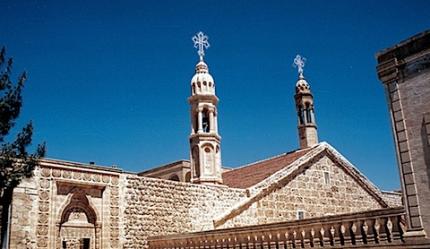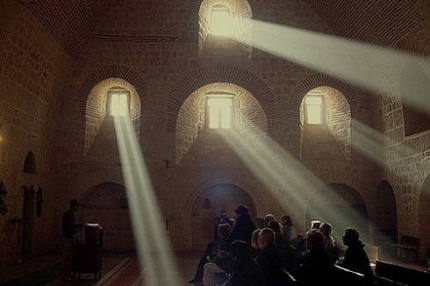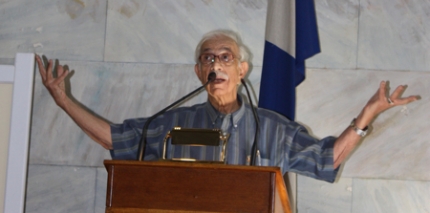By Uzay Bulut /
On June 23, the Armenian-Turkish newspaper Agos reported,

Inquiries by the Mor Gabriel Monastery Foundation revealed that dozens of churches and monasteries have been transferred to the Treasury first and then allocated to the Presidency for Religious Affairs, known as the Diyanet, in Turkish. And the cemeteries have been transferred to the Metropolitan Municipality of Mardin.
Kuryakos Ergün, the president of the Mor Gabriel Monastery Foundation, told The Philos Project that the decision of allocating the churches and monasteries to the Diyanet has been overturned, but Assyrians still have not recovered ownership:
Around 100 of our immovable properties have been seized by state institutions. We do use our churches, monasteries, and cemeteries because they have been ours for centuries, but we do not officially own them. The Undersecretariat of Treasury does. So the change in the decision regarding the Diyanet does not alter anything about the state of our sacred places and other properties. If authorities tell us tomorrow to get out of these places, we will have to do that.
It should be noted that the seizure of Assyrian properties is not a new phenomenon and did not start with the Islamic government of the Justice and Development Party (AKP). The first genocide of the 20th century was committed against Christian Armenians, Assyrians and Greeks in Ottoman Turkey from 1914–1923. More than 3 million Christians were murdered and hundreds of thousands were forcibly displaced. The properties of the murdered and the exiled were seized by government authorities and Muslim private citizens.
“If there had not been a Christian genocide in 1915, hundreds of thousands or even more than a million Assyrians would be living in Tur Abdin region today. But we are a tiny minority now.”
— SEYFO Center Founder Sabri Atman
Assyrians: From the largest empire to a persecuted minority
Mardin – which was once a part of the Kingdom of Assyria – is in the region of Tur Abdin, a name derived from the Syriac that means “mountain of the servants [of God],” an ancestral religious and cultural heartland of Assyrians. For 300 years, Assyrian kings ruled the largest empire in northern Mesopotamia that the world had yet known. The Apostle Thomas converted the Assyrians to Christianity, and by the third century A.D., they became a Christian nation.
During the Roman period, the city itself was known as Marida (Merida) from a Syriac/Neo-Aramaic name meaning “fortress.” Marida, the center of episcopal sees of several Armenian, Assyrian, Syriac and Chaldean churches, fell to the Seljuk Turks (led by Alp Arslan) after the Battle of Manzikert in the 11th century.
Though they once were the rulers of a great empire, Assyrians are now a stateless, persecuted minority in their native lands. And this is the result of continued massacres and pressure at the hands of Muslims and the absence of support or protection from the West. According to the Assyrian International News Agency, there has been a massacre of Assyrians every 50 years.
The greatest turning point of the seizure of Assyrian properties was the 1914–1923 genocide. In order to motivate Muslim masses to join the slaughter, on November 14, 1914, a jihad was declared from mosques and it was announced in sermons that “the property of the kafir[infidel] is halal.”
In his comprehensive article about the Assyrian genocide titled “Native Christians Massacred: The Ottoman Genocide of the Assyrians During World War I,” Professor Hannibal Travis wrote,
Ottoman soldiers and their Kurdish and Persian militia partners subjected hundreds of thousands of Assyrians to a deliberate and systematic campaign of massacre, torture, abduction, deportation, impoverishment, and cultural and ethnic destruction.
The genocide was accompanied by widespread assaults against Christian girls and women and the pillaging of immeasurable amounts of property. Travis explained,
The rape, kidnapping, and enslavement of Assyrian women were systematic and empire-wide, rather than being the fault of a few scattered criminals or unruly mobs.
The Turks deported the Assyrians en masse from their ancestral lands, confiscating thousands of homes and other property that would be of an inestimably large value today (a single apartment in present-day Turkey may be worth more than U.S. $100,000, while a single villa may be worth more than $200,000).
The perpetrators of the genocide aimed to create a homogenous – Turkish and Muslim – country. A slogan that echoes a similar objective – “One flag, one homeland, one state, one language, one religion, one nation” – has been commonly used by Turkish officials ever since. And in this mindset, there is no place for religious liberty, ethnic diversity or equal rights for all. Although more than 100 years have passed, the genocide is still denied by the Turkish government, and the mentality of seizing non-Muslim property and suppressing Christians is still alive and well.
The Syriac Christian co-mayor of Mardin, Februniye Akyol, for example, was removed from her post by the Turkish government last November and replaced by the governor of the city, Mustafa Yaman. Turkish authorities have also removed an Assyrian sculpture from a public square in front of the local council building in the city of Diyarbakir. No explanation has yet been provided by the Turkish government.
“The United Nations should take Assyrians under preservation”

The Assyrian plight did not end with the 1915 genocide. Minority Rights Group International has reported that the decades-long persecution against Assyrians in Turkey – including but not limited to forced evictions, mass displacement, the burning down of their homes and villages, abductions (including of priests,) forced conversions to Islam through rape and forced marriage, and murder – has decimated even the survivors of the genocide. Today, there are only around 20,000 Assyrians left in the country.
Sabri Atman, the founder, and president of the Assyrian Genocide and Research Center (SEYFO Center) told The Philos Project that:
The Islamofascistic mentality ruling Turkey is still disturbed by the existence of a handful Assyrians left in the region. Turkish authorities used to say “Alhamdulillah [Praise be to Allah], 99 percent of our country is Muslim.” It seems that they want to change this to “Alhamdulliah, 100 percent of our country is Muslim.”
If there had not been a Christian genocide in 1915, hundreds of thousands or even more than a million Assyrians would be living in Tur Abdin region today. But we are a tiny minority now. Though more than a century has passed, the genocide is a wound still bleeding. But if Turkey had been brought to account for it, the current government would not be able to implement those policies right now. It is obvious that the denial of genocide is a continuation of genocide. The current seizure of the Assyrian properties, churches, and monasteries should be analyzed from this perspective.
Atman also called on the U.S. and the U.N. to immediately take action for Assyrians:
Everybody now knows that there is no justice or rule of law in Turkey. Turkish jails are filled with journalists and human rights advocates who think differently from the government. However, the U.S. administration and European states are far from showing Turkey the required reaction due to their misguided understanding of a “strategic alliance.”
And If the U.N. wants to preserve its plausibility, it should declare that it is placing Assyrians under its protection.
Erkan Metin, an Assyrian human rights lawyer from Turkey, told The Philos Project that the seizure of Christian properties continued after the founding of the Turkish republic in 1923:
Think about cities such as Diyarbakır, Bitlis, Siirt, Hakkâri and Urfa. These cities had sizable Assyrian communities. How many people do today know that Assyrians used to live in those places? What has happened to their properties? In the aftermath of the 1915 genocide, the Turkish government passed laws of “Abandoned Properties” (“Emval-i Metruke”). Then in 1936, the Law on Foundations – which was an incredible fraud to seize more non-Muslim properties – was enacted by the government. The aim was to enable the transferring of the properties of murdered or exiled Christians to Muslims. And this was largely achieved. Christians who wanted to keep the ownership of their properties were prevented from doing so with these laws. Then came pogroms against Christians, and other legal obstacles before their owning their properties. It is unquestionable that the properties of Christian peoples and institutions have systematically been seized by the Turkish government.
Metin called Tur Abdin “the last fortress of Assyrians” in the region:
Around 2,000 Assyrians live in Tur Abdin. But the ongoing pressures from Muslim citizens as well as from the government might turn it into an Assyrian-free region. The policies of the government are threatening us. Assyrians are leaving Turkey. The Anatolian Greek community has already been made extinct by the government. They were either murdered or had to flee Turkey due to devastating pressures against them. They now exist only on paper, symbolically. I think we might end up the same way. If pressures continue, we too will become extinct.
Source: philosproject.org



